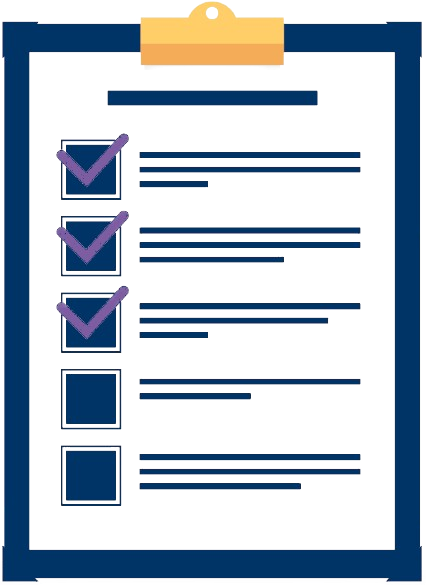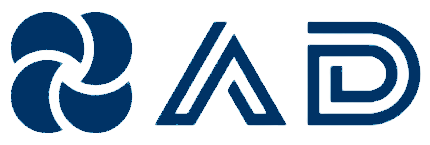Suggestions based on the Question and Answer that you are currently viewing
Clemson Company had the following stockholders’ equity as of January 1, 2014. Common stock, $5 par value, 20,000 shares issued $100,000 Paid-in capital in excess of par—common stock 300,000 Retained earnings 320,000 Total stockholders’ equity $720,000 During 2014, the following transactions occurred. Feb. 1 Clemson repurchased 2,000 shares of treasury stock at a price of $19 per share. Mar. 1 800 shares of treasury stock repurchased above were reissued at $17 per share. Mar. 18 500 shares of treasury stock repurchased above were reissued at $14 per share. Apr. 22 600 shares of treasury stock repurchased above were reissued at $20 per share. Instructions (a) Prepare the journal entries to record the treasury stock transactions in 2014, assuming Clemson uses the cost method. (b) Prepare the stockholders’ equity section as of April 30, 2014. Net income for the first 4 months of 2014 was $130,000.
Identify the segment information that is required to be disclosed by GAAP.
Presented below is information related to copyrights owned by Walter de la Mare Company at December 31, 2014. Cost $8,600,000 Carrying amount 4,300,000 Expected future net cash fl ows 4,000,000 Fair value 3,200,000 Assume that Walter de la Mare Company will continue to use this copyright in the future. As of December 31, 2014, the copyright is estimated to have a remaining useful life of 10 years. Instructions (a) Prepare the journal entry (if any) to record the impairment of the asset at December 31, 2014. The company does not use accumulated amortization accounts. (b) Prepare the journal entry to record amortization expense for 2015 related to the copyrights. (c) The fair value of the copyright at December 31, 2015, is $3,400,000. Prepare the journal entry (if any) necessary to record the increase in fair value.
Explain the difference between weak-form, semistrongform, and strong-form efficiency. Which of these forms of efficiency is most difficult to test? Which is most likely to be refuted? Explain how to test weakform efficiency in the stock market. (LO6)
Breslin Inc. made a capital contribution of investment property to its 100 percent-owned subsidiary, Crisler Company. The investment property had a fair market value of $3,000,000 and a tax basis to Breslin of $2,225,000.
Can a taxpayer with very little current-year income choose to not claim any depreciation deduction for the current year and thus save depreciation deductions for the future when the taxpayer expects to be more profitable?
Provide examples of off-balance sheet activities. Why are regulators concerned about them? (LO2)
Mason (single) is a 50 percent shareholder in Angels Corp. (an S Corporation). Mason receives a $180,000 salary working full time for Angels Corp. Angels Corp. reported $400,000 of taxable business income for the year . Before considering his business income allocation from Angels and the self-employment tax deduction (if any), Mason’s adjusted gross income is $180,000 (all salary from Angels Corp.). Mason claims $50,000 in itemized deductions. Answer the following questions for Mason. a. What is Mason’s self-employment tax liability? b. Assuming the business income allocated to Mason is income from a specified service trade or business, what is Mason’s deduction for qualified business income? Ignore the wage-based limitation when computing the deduction. c. Assume the same facts as in question (b), except that Angels Corp. reported $150,000 of taxable business income for the year. What is Mason’s deduction for qualified business income? Ignore the wage-based limitation when computing the deduction. d. Assuming the original facts, what is Mason’s net investment income tax liability (assume no investment expenses)? e. Assuming the original facts, what is Mason’s additional Medicare tax liability?
What is meant by the term green compact?
Briefly discuss the convergence efforts that are underway in the area of intangible assets.
What are closing entries and why are they necessary?
What are the desirable features of atomic or molecular self-assembly processes in nanotechnology?
Boey Company reported net income of $25,000 in 2015. It had the following amounts related to its pension plan in 2015: Actuarial liability gain $10,000; Unexpected asset loss $14,000; Accumulated other comprehensive income (G/L) (beginning balance), zero. Determine for 2015 (a) Boey’s other comprehensive income, and (b) comprehensive income.
The following defined pension data of Rydell Corp. apply to the year 2014. Projected benefi t obligation, 1/1/14 (before amendment) $560,000 Plan assets, 1/1/14 546,200 Pension liability 13,800 On January 1, 2014, Rydell Corp., through plan amendment, grants prior service benefi ts having a present value of 120,000 Settlement rate 9% Service cost 58,000 Contributions (funding) 65,000 Actual (expected) return on plan assets 52,280 Benefi ts paid to retirees 40,000 Prior service cost amortization for 2014 17,000 Instructions For 2014, prepare a pension worksheet for Rydell Corp. that shows the journal entry for pension expense and the year-end balances in the related pension accounts.
Would the world benefit from the general imposition of controls on the movement of international finance?
What is a cost object? Give 3 examples.
Cost variance analysis; use of variance information Baker Street Animal Clinic uses a particular serum routinely in its vaccination program. Veterinarian technicians give the injections. The standard dose is 10cc per injection, and the cost has been $100 per 1000cc. According to records, 2000 injections were administered last month at a serum cost of $2270. The veterinarian noted that the serum for the injections should have cost $2000 [($0.10 per cc) × (10cc per injection) × (2000 injections)]. Moreover, she noted some carelessness in handling the serum that could easily lead to unnecessary waste. When this issue was brought to the attention of the technicians, together with the $270 discrepancy in costs, they claimed that the $270 excess costs must be due to the inflated prices charged by the veterinarian supply company. Purchasing records reveal that the price for the serum used last month had indeed increased to $105 per 1000cc. Required (a) Provide variance calculations to help you evaluate the technicians’ argument. (b) Discuss whether a significant waste of serum occurred last month. Include quantitative and qualitative information in your discussion. (c) If you were the manager for the Baker Street Animal Clinic, how would you use the results of your analyses in parts (a) and (b)? Explain.
Provide examples of the four types of corporate culture.
Beverly Crusher is a licensed CPA. During the first month of operations of her business (a sole proprietorship), the following events and transactions occurred. April 2 Invested $32,000 cash and equipment valued at $14,000 in the business. 2 Hired a secretary-receptionist at a salary of $290 per week payable monthly. 3 Purchased supplies on account $700. (Debit an asset account.) 7 Paid offi ce rent of $600 for the month. 11 Completed a tax assignment and billed client $1,100 for services rendered. (Use Service Revenue account.) 12 Received $3,200 advance on a management consulting engagement. 17 Received cash of $2,300 for services completed for Ferengi Co. 21 Paid insurance expense $110. 30 Paid secretary-receptionist $1,160 for the month. 30 A count of supplies indicated that $120 of supplies had been used. 30 Purchased a new computer for $6,100 with personal funds. (The computer will be used exclusively for business purposes.) Instructions Journalize the transactions in the general journal. (Omit explanations.)
A 16 gage nickel wire (0.0508-in diameter) connects a solenoid to a control circuit that is 32.8 ft away. (a) What is the resistance of the wire? Use Table 4.3 as a reference. (b) If a current was passed through the wire, it would heat up. How does this affect the resistance?
How do partners determine whether they are passive participants in partnerships when applying the passive activity loss limitation rules?
Explain why investors that provided guarantees on commercial paper were exposed to so much risk during the credit crisis. (LO1)
David and Lilly Fernandez have determined their tax liability on their joint tax return to be $3,100. They have made prepayments of $1,900 and also have a child tax credit of $2,000. What is the amount of their tax refund or taxes due?
1. : Do the clinical trials in Albania, and if the drug is approved, use part of the profits to set up a compassionate use program in Albania, even though setting up a distribution system and training doctors to administer the drug, monitor patients for adverse effects, and track results will entail considerable expense.
A blanking die is to be designed to blank the part outline shown in Figure P20.4. The material is 4 mm thick stainless steel (half hard). Determine the dimensions of the blanking punch and the die opening.
The benefits of buying with AnswerDone:

Access to High-Quality Documents
Our platform features a wide range of meticulously curated documents, from solved assignments and research papers to detailed study guides. Each document is reviewed to ensure it meets our high standards, giving you access to reliable and high-quality resources.

Easy and Secure Transactions
We prioritize your security. Our platform uses advanced encryption technology to protect your personal and financial information. Buying with AnswerDone means you can make transactions with confidence, knowing that your data is secure

Instant Access
Once you make a purchase, you’ll have immediate access to your documents. No waiting periods or delays—just instant delivery of the resources you need to succeed.
